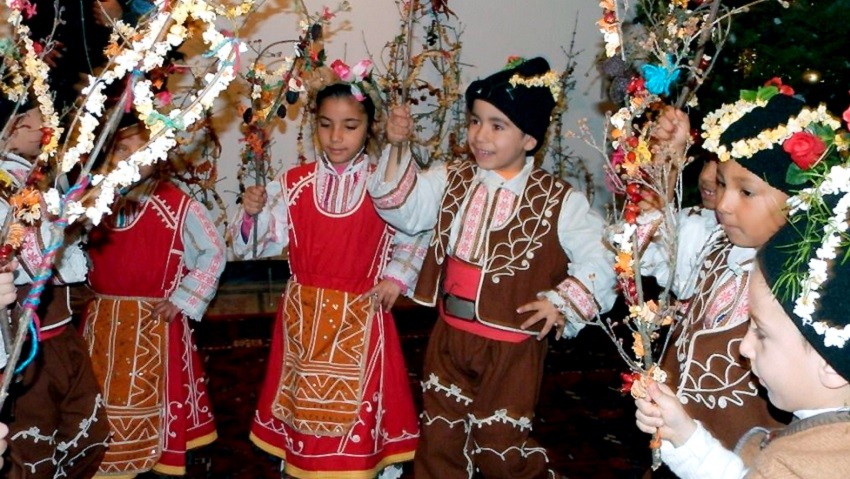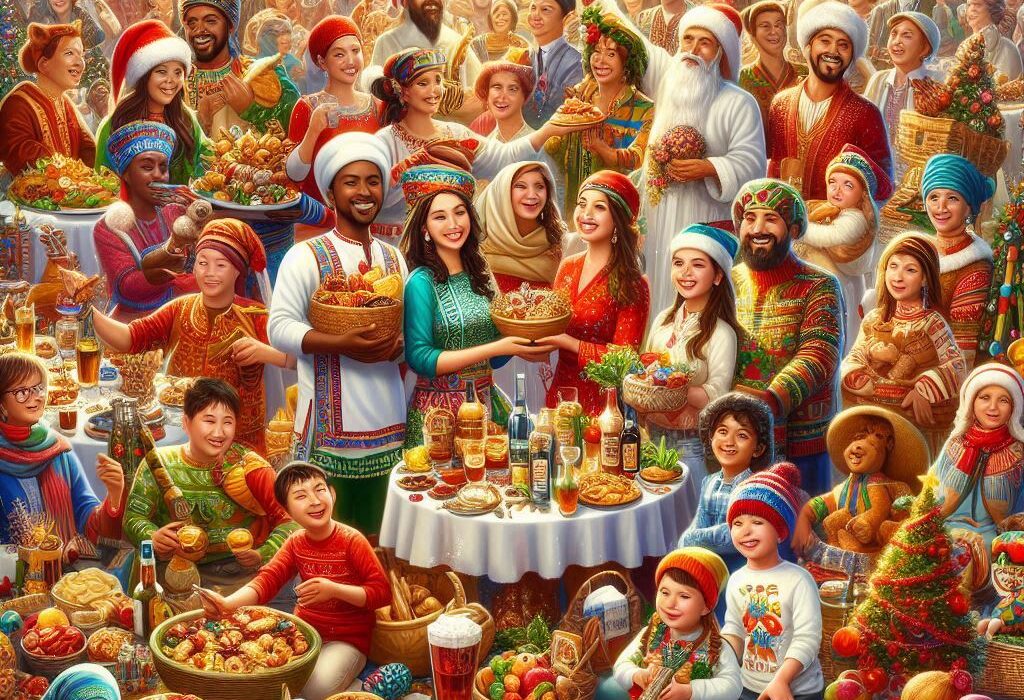It is December and as most of you know, Christmas is a holiday that falls on December 25th and celebrates the birth of Jesus. People hang stockings, decorate trees, exchange gifts and eat food to celebrate, but around the world there are many different fun traditions that people have to celebrate Christmas, from opening Christmas crackers, to different greetings, and all the various names Santa is called.
While Americans say, “Merry Christmas,” there are plenty other greetings used around the world such as: Gëzuar Krishlindjet (Albanian), Sretan Božić (Croatian), Glædelig Jul (Danish), Zalig Kerstfeest (Dutch), Häid jõule (Estonian), Christmas Mobarak Ho (Farsi), Frohe Weihnachten (German), Kalá Christoúgenna (Greek), Shub Naya Baras (Hindi), Gleðileg Jól (Icelandic), Nollaig Shona Dhuit (Irish), Buon Natale (Italian), Merīkurisumasu (Japanese), Sung Tan Chuk Ha (Korean), Kung His Hsin Nien bing Chu Shen Tan (Mandarin), Wesołych Świąt (Polish), Feliz Natal (Portuguese), Crăciun Fericit (Romanian), Schastlivogo Rozhdestva (Russian), Feliz Navidad (Spanish) and Chuc Mung Giang Sinh (Vietnamese).
After you have said hello it is time to let the games begin! Here are some of the most unusual holiday games and activities from around the world:

A Pietà takes center stage in Noche de Rabanas this year. (Photo: Nikhol Esteras)
1. Night of the Radishes (Oaxaca, México): For most of the year carvers practice their craft on wood, but on La Noche de Rábanos (The Night of the Radishes), they carve radishes instead. The root vegetables have various scenes depicted on them involving mostly Nativity scenes, Oaxacan legends, monsters, famous people and scenes from daily life. Large radishes are preferred for carving. This strange competition began in 1897. Because radishes are not native to México, the Spanish brought them over during colonial times. During the annual holiday, market radish farmers started carving the vegetables to attract customers. They found that the radishes\’ firm texture stood up well to carving, so in 1897 the mayor of Oaxaca started an official competition, La Noche de Rábanos, held every December 23rd.

(Photo: sintaiklaas.com)
2. Sinterklaasgedicht (Netherlands): Sinterklaasgedicht or Saint Nicholas poems are a tradition that adults in the Netherlands participate in on Saint Nicholas Day (December 6th). Adults will exchange poems, which are sometimes wishes for good health and fortune. Quite often the poems are used to tease friends and family by bringing up embarrassing memories or highlighting their less flattering traits. The poems are 12 sentences long and written from the perspective of Saint Nicholas with a list of all the naughty and nice things the person has done. Traditionally, the poem comes with a present that is wrapped, to hide what is truly inside. In some households Sinterklaas leaves clues to be “found” by the children leading them to the location where the real gift is hidden.

Bulgarian children participating in Survakene (Photo: BGNES)
3. Survakane (Bulgaria): Survankane is a Bulgarian luck tradition where the youngest child uses a stick called a survachka, a curled tree branch from a dogwood tree decorated with dried fruit, nuts, foil, seeds, coins and bread. The child softly whacks the rest of the family members with it as they go. The child will sing a song or recite a poem full of good wishes for the New Year. The ritual is believed to provide good luck for the New Year and delivers the Bulgarian proverb of, “New year, new luck”. It is held every January 1st.
Now that you have learned all about the different ways and traditions people around the world celebrate, I encourage you to have fun celebrating your own traditions.






